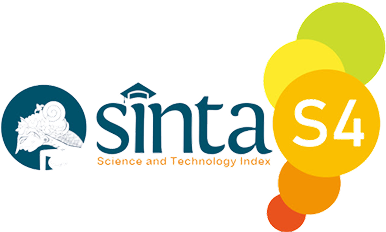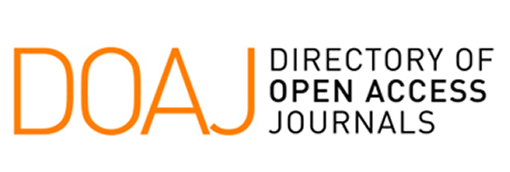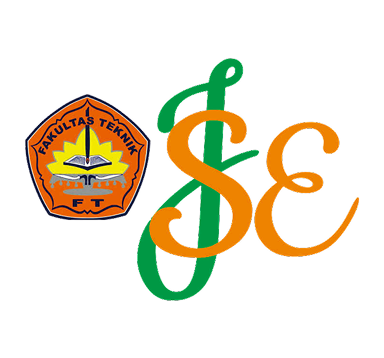Karakteristik dan Persepsi Pengunjung untuk Pengembangan Wisata Edukasi di Taman Cadika Kota Medan
Keywords:
persepsi pengunjung, ruang terbuka hijau, wisata, wisata edukasiAbstract
Cadika Park has long been a popular public space for outdoor learning and social activities. The development of Cadika Park into an educational tourism area needs to take into account the characteristics and perceptions of visitors. The purpose of this study was to analyse visitor perceptions for the development of educational tourism in Cadika Park. The research data came from drone mapping, field observations and interviews with questionnaires on field conditions and visitor characteristics and perceptions. Descriptive analysis was used to describe the field and questionnaire data to provide an overview of field conditions and visitor characteristics and perceptions. Analysis in the form of tables and graphs that quantitatively describe the distribution of characteristics and opinions of respondents in relation to the availability of objects and the potential for educational tourism development. The study found that almost all respondents perceived that Cadika Park has educational tourism objects. The Cadika Park area has natural potential for educational tourism in the form of flora, fauna and water. According to most respondents, forests and lakes are the most interesting objects that are widely used for educational activities.
References
[1] K. Tzoulas, K. Korpela, Kalevi, S. Venn, V. Yli-Pelkonen, A. Kazmierczak, J. Niemelä, Jari and P. James, “Promoting Ecosystem and Human Health in Urban Areas Using Green Infrastructure: A Literature Review, Landscape and Urban Planning, Vol. 81, pp. 167-178, 2007 https://doi.org/10.1016/j.landurbplan.2007.02.001
[2] K.L. Wolf. "Chapter 16. Metro Nature: Its Functions, Benefits, and Values". Growing Greener Cities: Urban Sustainability in the Twenty-First Century, edited by Eugenie L. Birch and Susan M. Wachter, Philadelphia: University of Pennsylvania Press, pp. 294-315. 2008 https://doi.org/10.9783/9780812204094.294
[3] X. Zhou and M. Parves Rana. "Social Benefits of Urban Green Space: A Conceptual Framework of Valuation and Accessibility Measurements." Management of Environmental Quality: An International Journal, vol. 23, pp. 173-189, 2012.
[4] A. Sugandhy dan H. Rustam. Prinsip Dasar Kebijakan Pembangunan Berkelanjutan Berwawasan lingkungan.Jakarta: Bumi Aksara. 2009.
[5] Y. Putra, “Pengaruh Service Quality Terhadap Customer Satisfaction Taman Cadika Pramuka Johor di Medan”, TOBA: Journal of Tourism, Hospitality and Destination, vol. 1, pp. 1-6, 2022.
[6] I. Nugroho, H.R. Yuniar, P.D. Negara, R. Hanafie, S. Suwarta, S. Sudiyono dan N. Paramita, N, “Persepsi Terhadap Obyek Wisata: Upaya Edukasi Dan Promosi Untuk Pengembangan Ekowisata Coban Talun, Kota Batu”, In Conference on Innovation and Application of Science and Technology (CIASTECH) pp. 221-230. 2021.
[7] H. Hariyanto, “Pengembangan Obyek Wisata Candi Gedongsongo Sebagai Laboratorium Ips Terpadu”, Jurnal Geografi: Media Informasi Pengembangan dan Profesi Kegeografian, vol. 8, pp. 126-134, 2011.
[8] E. Malihah, and H.P.D, “Tourism education and edu-tourism development: Sustainable tourism development perspective in education”, In The 1st International Seminar on Tourism (ISOT)-“Eco-Resort and Destination Sustainability: Planning, Impact, and Development, pp. 1-7, 2014.
[9] M. Singarimbun dan S. Effendi, Metodologi Penelitian Survei. Jakarta : PT Pustaka LP3ES. 1995.
[10] S. Arikunto. Prosedur Penelitian: Sebuah Pendekatan Praktik. Jakarta: Rineka Cipta. 2006.
[11] W. Surakhmad, “Pengantar Penelitian Ilmiah Metode Dasar dan Teknik”, Bandung: Tarsito. 1994.
[12] A.S. Thoha, Y. Afifuddin, T.Y. Sari, P. Patana dan M. Ulfa, "Perencanaan Tapak Ekowisata Menggunakan Teknologi Drone di Desa Timbang Lawan Kecamatan Bahorok Kabupaten Langkat Sumatera Utara", Prosiding Seminar Nasional Pengabdian Fakultas Pertanian UNS Tahun 2021, vol. 1, pp. 244-257, 2021.
[13] A.S. Thoha, I. Fitri, Charloq, D.F. Yanti, O.H.E. Manurung, A.M. Simamora, L. Nurfauziah, N. K. Jayanti dan D. Firmansyah "Pemanfaatan Drone untuk Pemetaan Potensi Ekowisata Mangrove di Percut Sei Tuan Deli Serdang Sumatera Utara", Prosiding Seminar Nasional Pengabdian Fakultas Pertanian UNS Tahun 2022, vol. 2, pp. 145-154, 2022.
[14] R. Priyanto, D. Syarifuddin dan S. Martina, “Perancangan model wisata edukasi di objek wisata Kampung Tulip”, Jurnal Abdimas BSI: Jurnal Pengabdian Kepada Masyarakat, vol. 1, pp. 32-38, 2018
[15] Winarto, “Pengembangan Model Wisata Pendidikan Berbasis Kearifan Lokal dengan Pendekatan Saintifik di Brebes Selatan Sebagai Alternatif Model Belajar Siswa Sekolah Dasar”, Jurnal Dialektika Jurusan PGSD, vol. 6, pp. 32-47, 2016.
[16] L.N. Harahap, I.N., Abdiyanto and A. Sugiarto, “Inventory Of Shade Trees In Green Open Spaces In Taman Ahmad Yani, Taman Beringin, Taman Cadika In Medan City”, Bulletin of Engineering Science, Technology and Industry, vol. 2. pp 106-126, 2024.
Downloads
Published
Issue
Section
License
Copyright (c) 2024 Elfiyanti Sembiring, Badaruddin, Achmad Siddik Thoha (Author)

This work is licensed under a Creative Commons Attribution 4.0 International License.












